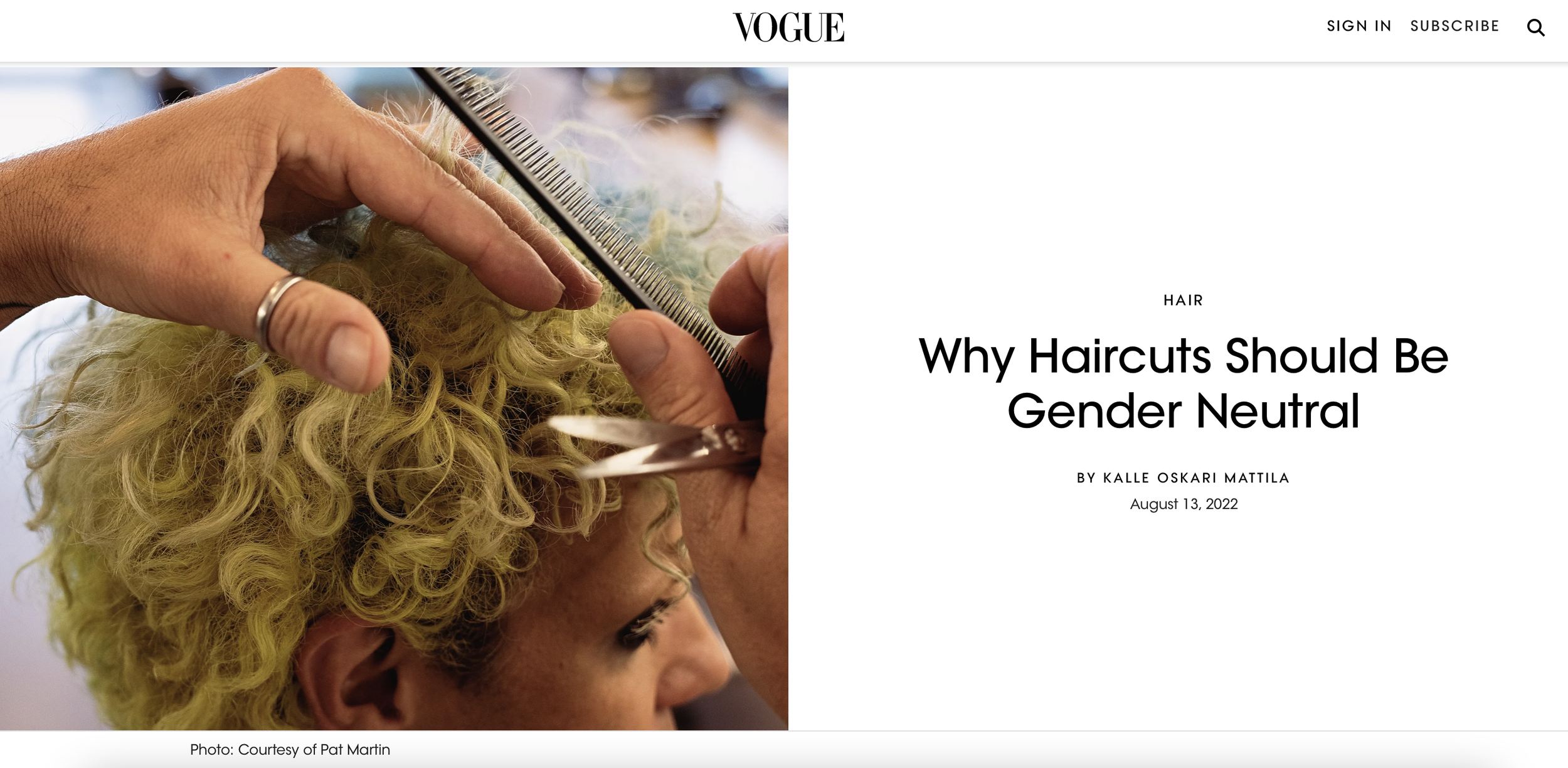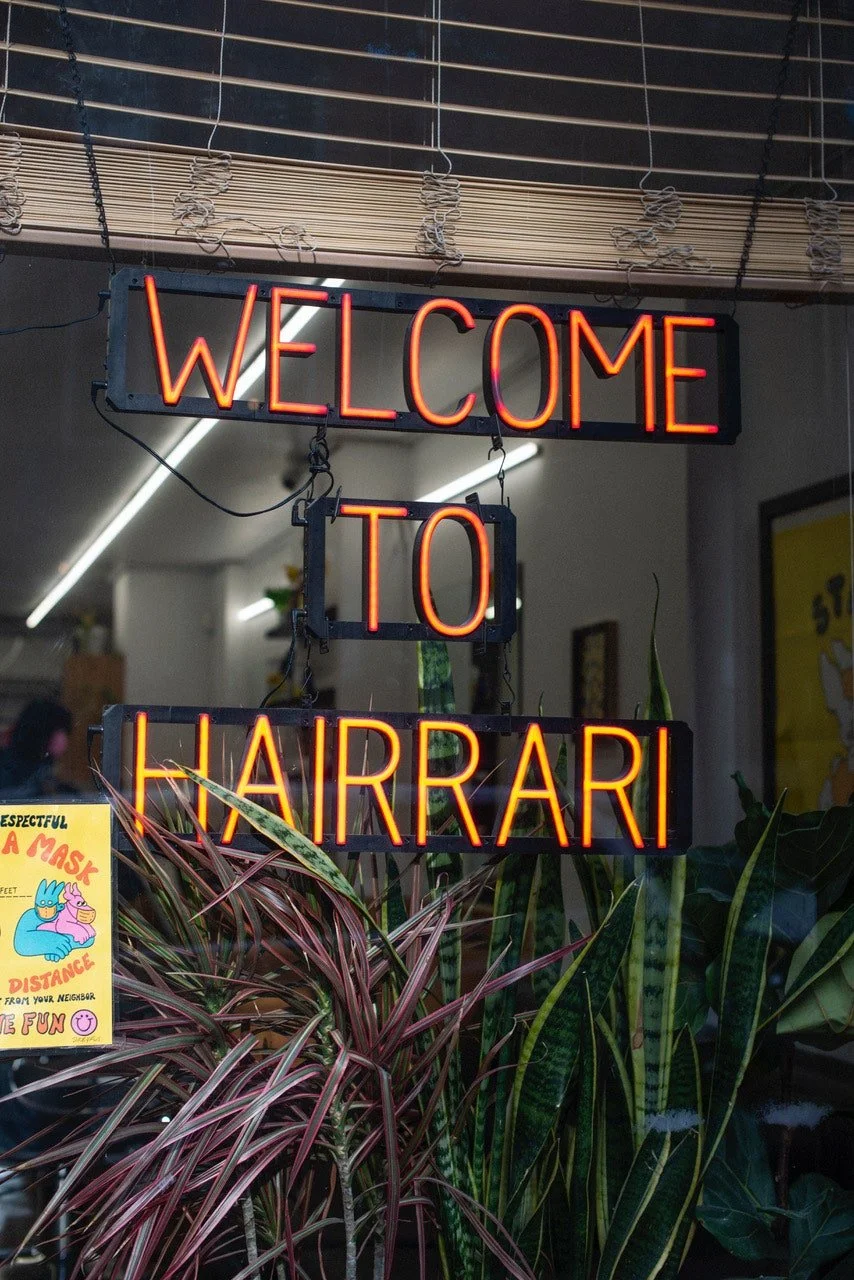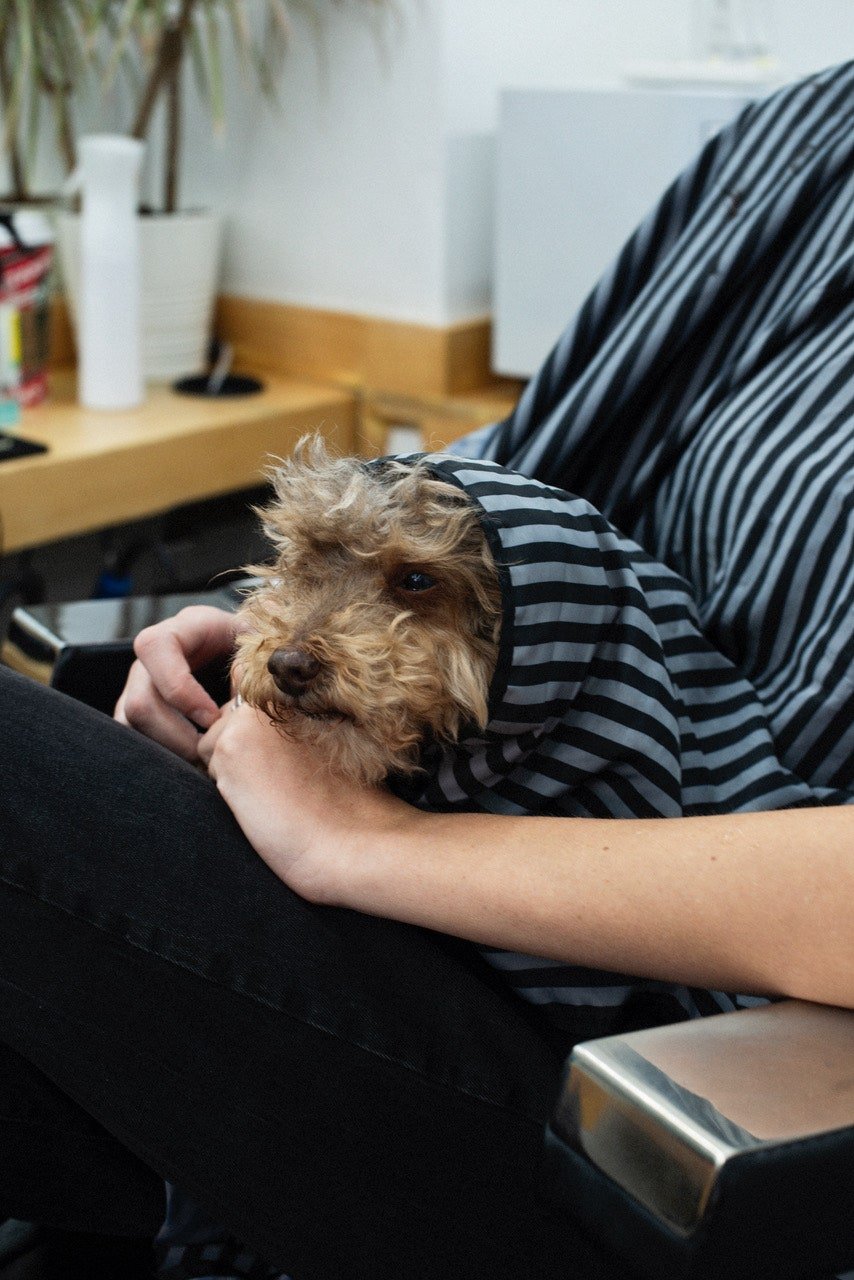We’re in Vogue, baby!
“This haircut is going to get you so much pussy,” the barber said as he marveled at what I thought was a pretty mediocre job. I smiled back at him out of politeness. I didn’t feel like going into detail about my sexual orientation, especially in the barbershop, a space so fraught with toxic masculinity.
When I found a queer barber—and a queer barbershop, called Hairrari—in the East Village many years later, it felt like a relief. I could be myself in that chair. Besides, the haircuts were exceptional; in fact, they were the best I’d ever had. “Now you’re ready to go eat up some boys,” my barber Wil said after he finished my cut just in time for Friday night.
To me, queerness has always been about more than just sexual or gender identity; it’s about everything that clashes against the norm, the possibilities that lie just outside our purview. What I hadn’t realized back then was that haircuts could be queer too. Indeed, there was something in the Hairrari barber’s styling that was distinctly different from any other cut I’d ever received: the proportions of it, the contrasts of it. It wasn’t anything drastic, really: I’d just asked the barber to do whatever he thought would look good, a version of the standard request of “short on the sides, longer on the top.” Yet the haircut was more customized than that. It was somehow edgier, more interesting. The difference may have been small, but people noticed. I got compliments everywhere I went.
PC: Pat Martin
Before, I thought my options were limited to what I could see on the pages of the sticky, laminated picture books at the corner barbershop. Flipping the pages from one conventional haircut to the next, it felt as though I was being forced into the same mold as the rest of the guys. But there was a vast area of possibility beyond those basic models.
“Queer haircuts are a little bit more edgy, they’re punky, they stick out more than other haircuts,” says Magda Ryczko, founder and co-owner at Hairrari. “There are some shaped parts sometimes, there’s some undercut happening, there’s some asymmetry going on, some wild colors. They’re very creative and something different.”
“Anyone can rock a queer haircut. It’s hair,” adds Sara Olivia Granberger, co-owner of Hairrari’s shop in Los Angeles. In fact, to use a term like queer hair is to somewhat miss the point, say Ryczko and Granberger. At Hairrari, haircuts are just cuts, or creative cuts. It’s about personalization rather than hair defining someone’s gender or sexual orientation. “It’s about using the hair itself to enhance what you already have; how you present yourself… your style, your energy all around,” says Granberger.Hairrari, which opened its first location in Williamsburg in 2011 and now operates three shops across New York City and one in L.A. (with another one on the way for Portland, Oregon), was among the first barber-salons to formally challenge the gender binary.
“Hairrari seems to really specialize in unique fun haircuts that most standard barbershops don’t do often,” Sanjay Racha, who frequents the barbershop, wrote to me in a message on Instagram. “Trans people often like to play with our presentations beyond what is normal for cis people. To me, my hair is not just about “passing” as male—at this point, it is also a bit about gender fuckery, about breaking expectations. And this salon gets it.”
Like fashion, the beauty industry remains gendered. There are divisions in who is welcome in what space, and in what is considered “acceptable” styling for whom. Salons have generally been seen as more feminine spaces, while barbershops have traditionally been regarded as more manly, Ryczko and Granberger say. The same goes for certain cuts: even though trends cross over frequently, the language around them can remain gendered. Styles like a pixie, a bob, or a blowout work across genders, but those words continue to connote “feminine cuts.”
The binary is also reflected in price. While gender-based pricing is now unlawful in some states like New York and Massachusetts, countless salons across America still charge more for “women’s haircuts.”
That enforcement of the binary leaves out a lot of people who identify somewhere on the spectrum, as well as those looking for something different than conventionally feminine or masculine cuts. At Hairrari, all haircuts are priced according to the creativity of the cut and length of hair.
“Hairrari was such a respite for me because it felt like the only public place I could be out as trans / fully myself,” AB Blader, a customer, wrote in an Instagram message. “I remember my first time there telling Syd I wanted a haircut that would make me look like a cute femboy f@g and not like a lesbian and they knew exactly what I meant. Truly such a gender euphoric moment.”
When Ryczko founded Hairrari ten years ago, she didn’t immediately advertise it as gender neutral. She always wanted the place to be a friendly space for everyone, and especially non-binary people. The clientele and the team (many of whom are former clients) came to reflect that.
Ryczko officially added the label of gender neutral about four or so years ago, when a client suggested it. “I never really thought it's a good idea to label Hairrari gender neutral,” says Ryczko. “But then after thinking about it, I [realized]... That's what it is, it's gender neutral. We're catering to everyone, and also we want people to be comfortable asking for any type of haircut, whether it's feminine, masculine, or androgynous.”
PC: Anna Bloda
The gender binary too often limits what people imagine possible for themselves, or for their clients. “To be able to ask my hair to be styled in just the way I prefer to present without it being questioned as too feminine or too masculine is amazing—and sadly, very rare for trans people,” wrote Racha.
“In previous salons, stylists would often say ‘you don’t want that, that’s a men’s haircut’ or ‘your hair is so much prettier long, you don’t want to cut it short, you’ll look too masculine’,” wrote Lexi Hartt, another Hairrari customer. “These experiences resulted in constant anxiety about what other people felt I should look like and what they would see when they looked at me.”
Thinking back to my experiences as a cis man at more conventional barbershops, I notice now how often the barbers would opt for more traditionally masculine elements in the cut—a square shape, or a slicked-back style with a side part—even when I didn’t ask for them. And when I switched from one barbershop to the next, hoping for a different outcome, the new barber would often model the hair based partly on how it had been cut before.
Who was I to interject? I figured the barbers knew best. Besides, the more bad cuts I got, the more risk averse I became.
Much is left unsaid in the stylist-client relationship. Ryczko says it’s important, as a stylist or barber, to look for clues in a client’s personal style and self-expression, but also to not assume too much. Hairrari asks everyone to write down their pronouns when booking their appointment online.
“We’re not just looking at hair, we’re looking at the whole person when they come in,” says Granberger. A lot of it has to do with gauging feeling too, Ryczko adds. “When some people come in, they say, ‘what do you think, what do you think?’ And I always kind of ask them, ‘how do you feel? Do you feel you like it’s better longer? Or do you feel better with shorter here in the back or longer on your neck?’” Ryczko says. “I think that has a lot to do with it, how we feel. The better we feel, the stronger and more confident we are.”
Gender-neutral barber-salons are places of self-exploration and self-expression for all. Ryczko says Hairrari’s clientele is varied, with queer and straight people alike, families, kids, and the elderly. “If you look at it from a business perspective, it's actually better for a business to have a place that is all-inclusive, because that means that everyone can go there,” says Granberger.
“Gender-neutral hair is just a starting point for breaking the gender binary,” says Ryczko. She sees spas and nail salons as the next possible frontier for her gender-neutral business. “I feel like just bringing people together. Even when I'm having parties, I like to always make sure I'm inviting everyone.”
See the full article here




